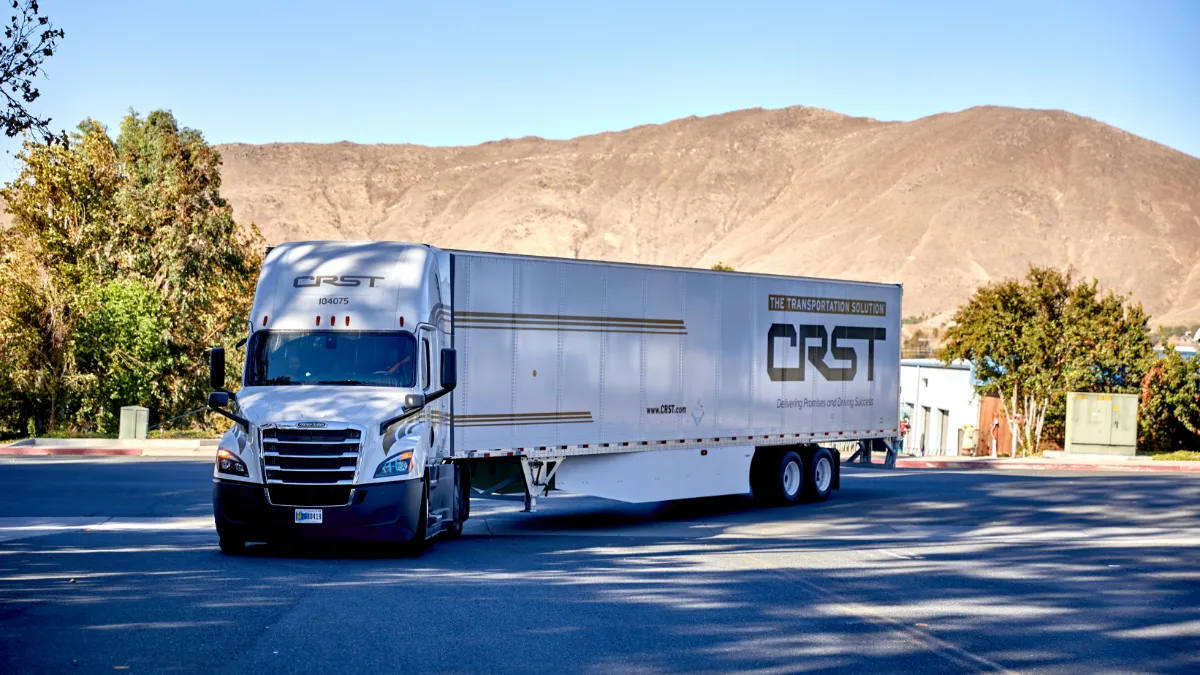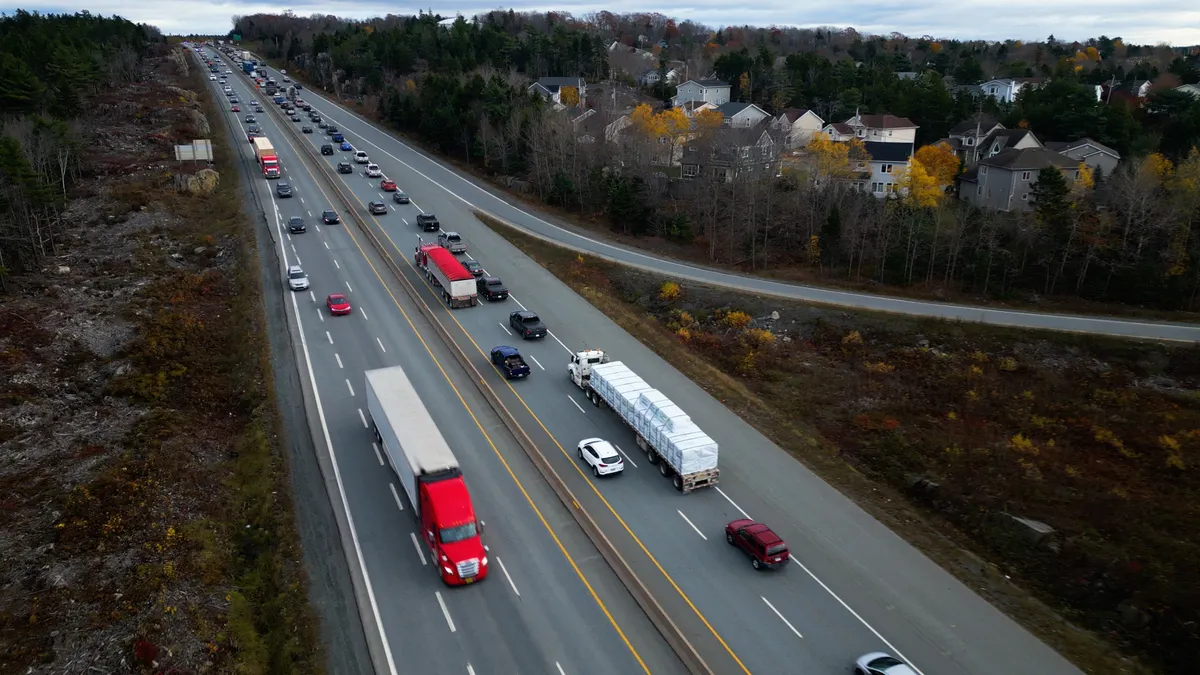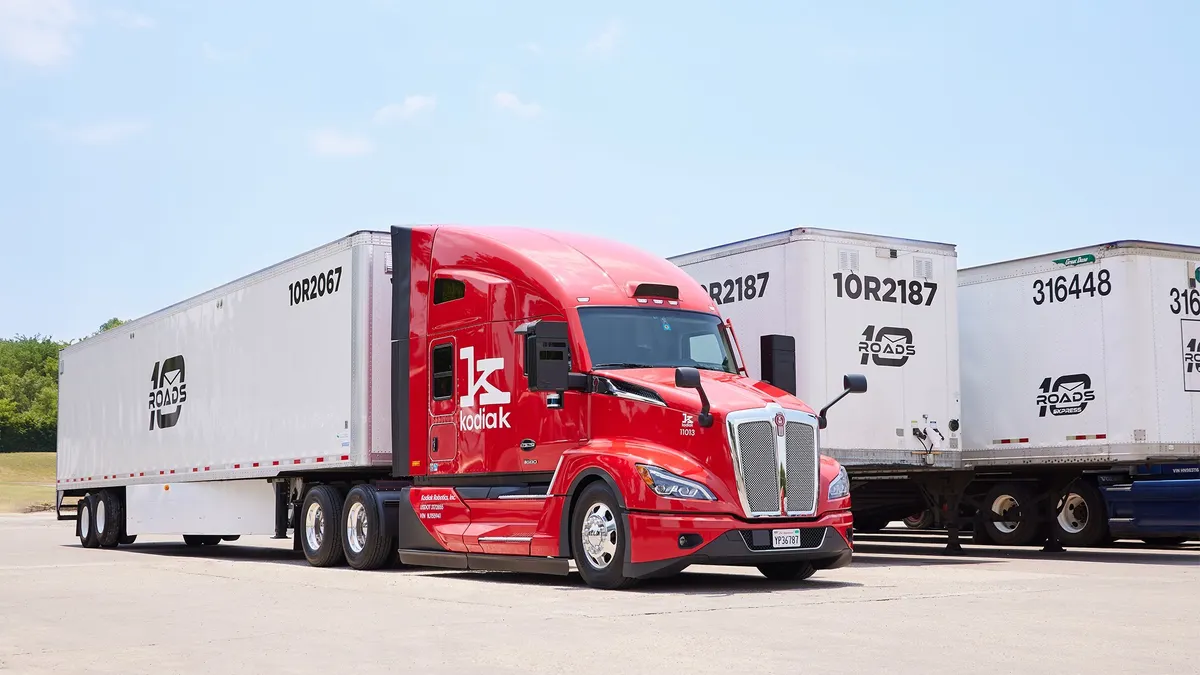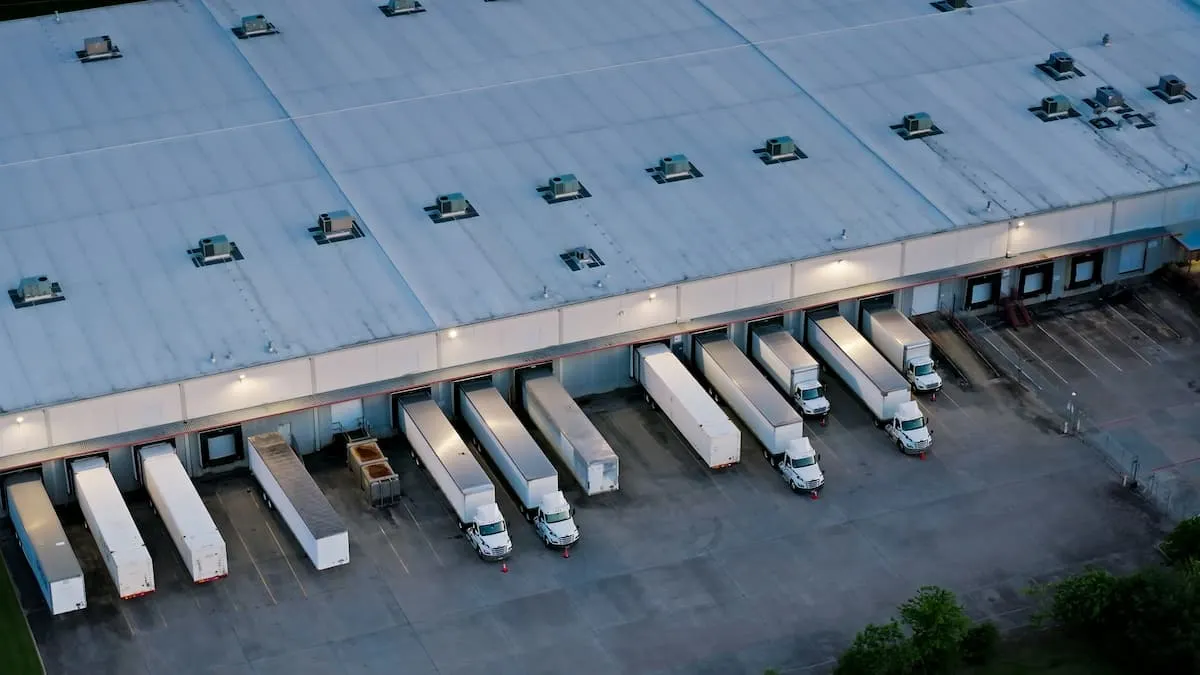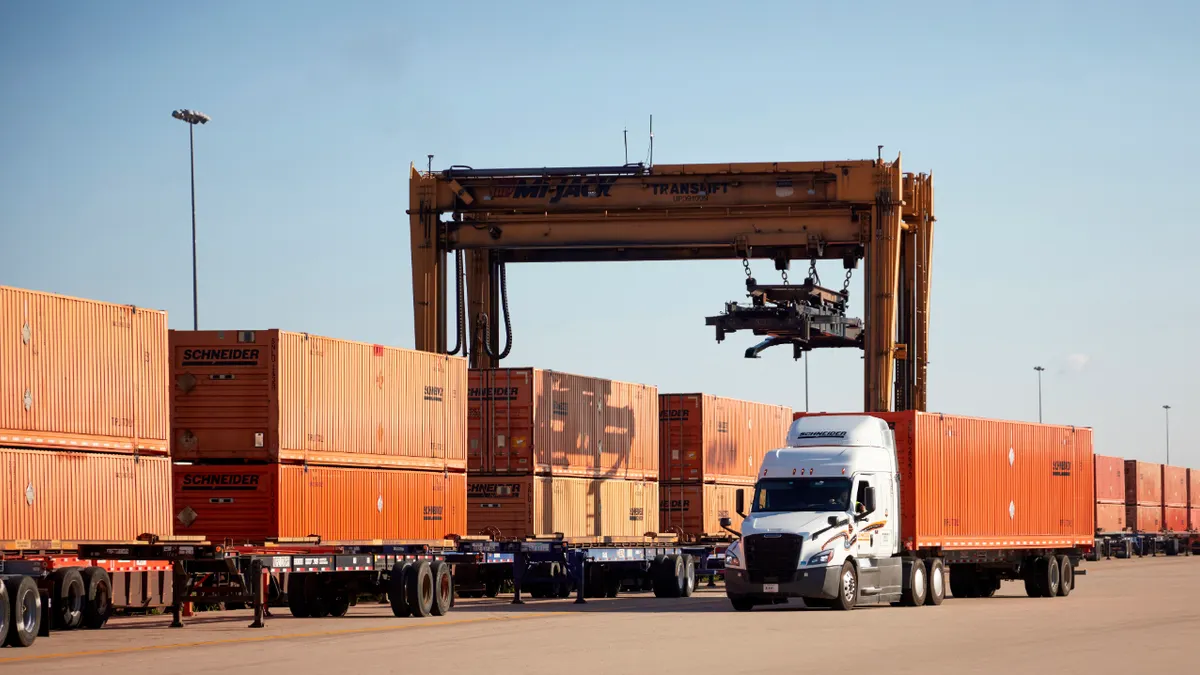The time and costs of managing a fleet may not be worthwhile for manufacturers or retailers — and that makes them prime candidates for private fleet conversion.
"It's really a lot for people that are running and operating smaller fleets, particularly if it's not their core business, not their core focus," said Rebecca Lynn White, vice president of corporate development at Kenan Advantage Group.
KAG, along with J.B. Hunt and other trucking companies, has seen its pipeline begin to fill with potential fleet-conversion customers. While the pandemic likely had some small hand in encouraging the trend away from private fleets and toward dedicated or contract carriage, the real motivating factors for clients are the plain realities of trucking.
Owning a fleet is "a very asset-heavy business," White said. "So, it requires a lot of capital investment in the tractors, into trailers." Add to that other costs, such as technology and maintenance, and transport becomes a big expense, and the financial benefits of outsourcing become evident.
The handoffs: Drivers and insurance
Companies that don't want to manage their fleet but want assured capacity have a couple options. One is dedicated service. Daseke COO Rick Williams said via email the company is focused on growing that portfolio.
"We began offering dedicated full service solutions at the request of customers who had the need to develop a private fleet. Then, once we had provided those services, shippers who had private fleets came to us for conversion offerings," Williams said.
Conversion is the other option, for shippers who have fleets but have come to desire handing it off. In particular, private fleets are typically very in relinquishing responsibility for two everyday aspects of trucking as a business: drivers and insurance.
"I think the pandemic shed light on the importance of having consistent, quality capacity."

Brett Saddler
Vice President of Regional Sales for CRST
Drivers are in short supply already, so finding backup for sick drivers, and losing drivers in the FMCSA's Clearinghouse, puts private fleets at risk of losing capacity, Brett Saddler, vice president of regional sales for CRST, said via email. A company such as CRST has experience dealing with surge, recruitment and retention that a private fleet might not.
And insurance costs have been on the rise, with the threat of nuclear verdicts hanging overhead. A large trucking company can spread those and other costs across a range of equipment, business segments and personnel, White said. A small, private fleet does not have that flexibility. Saddler and Williams agreed that limiting liability is a big draw for conversion.
Fleet conversions haven't typically been a big part of trucking firms' business, but interest is increasing.
KAG has done more than 60 conversions since 2010, White said.
J.B. Hunt said it set a record last year for the number of engineering design requests it received in one month, as private fleets inquired about conversions. Nick Hobbs, the carrier's president of dedicated contract services, said during Baird's Industrial Conference in November that private fleets saw how J.B. Hunt was able to reallocate resources during pandemic-driven market swings — and realized they could not.
"I think the pandemic shed light on the importance of having consistent, quality capacity no matter if it’s through your private fleet or purchased transportation," Saddler said.
How it works
At its most basic, a private fleet conversion involves a common carrier buying out a company's private fleet and operating it on that company's behalf, White said. But zoom in, and the complexity becomes clearer.
"It really is a lot of work upfront and takes more time than most people think," Saddler said. "There are endless hours spent planning."
The process starts with exploratory conversations between the trucking firm and the private fleet, which could take any amount of time, depending on how ready the private fleet is to sell, White said.
Saddler noted these conversations are the most challenging and time-consuming parts of a private fleet conversion, as it's important to understand the customer's business and expectations. Also, the two parties must identify the lanes and pickup and delivery locations, White said.
Once the client is on board, the conversion process usually takes about 60 days, "sometimes a little bit longer; sometimes a little bit less, depending on what needs to be done," according to White.
Designing the rate structure and drawing up a contract for partnership, as well as for acquiring the assets, comes next in the process. Saddler said trucking firms need to understand if equipment leases are involved, or if they'll be purchasing new equipment. And if it's specialty equipment, is the firm ready to maintain it? Trucks might also need to be accessorized to match the company doing the conversion, such as adding ELDs, cameras and door signs, White added.
Once that foundation is in place, one of the last steps is to address the drivers — a human-resources endeavor that is sometimes underappreciated, White said. KAG can usually onboard drivers in 10 days to three weeks, depending on the number of drivers.
KAG has a large pool of drivers already in its system, so it can backfill for incoming drivers who need to take some time to onboard with any overflow capacity. Saddler noted the work the trucking firm also must do in the background of transitioning drivers, such as considering pay, benefits and pensions.
Sometimes a conversion requires transitioning or hiring non-drivers, as well, White said. If the situation calls for it, KAG will hire dispatchers, technicians or other operations managers. "It really is sort of customized," she said.
Size and scale matter
In general, private fleet conversion is a service only specific types of carriers are well-positioned to offer. White said KAG's size helps it complete larger conversions that could require onboarding numerous drivers from multiple locations, as more available resources makes for a smooth transition.
"I think this is where scale matters," Williams wrote. "Compare all the resources, tools and buying power of an organization our size to the shipper, who only has the buying power and minimal resources and tools if they are operating a private fleet of 10-100 trucks."
"It really is a lot of work upfront and takes more time than most people think."

Brett Saddler
Vice President of Regional Sales for CRST
Experience helps, too. CRST has been in the business since 1955, Saddler said, and it's one of the largest transportation companies in the U.S., operating in several verticals. That all comes into play, when it's doing a conversion.
The company doing the conversion needs to create standard operating procedures, design networks, build safety models and identify customer-specific key performance indicators, Saddler said. "This is all done before a carrier sees a single penny of revenue."
But the work pays off. Private fleet conversions are built on partnerships and are often sealed with long-term contracts. White said that can yield even more business sometimes. KAG clients sometimes end up giving the carrier more business that they'd typically give to third parties, finding it easier to work with one partner.
"We typically will receive pretty strong feedback and, like I said, can even result in further partnerships or further business with the company down the road," White said.
This story was first published in our sister publication, Transport Dive. Sign up here.


